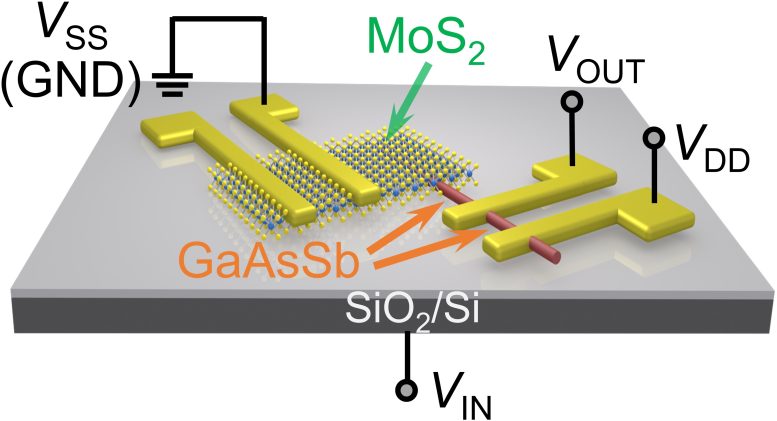
Researchers at City University of Hong Kong have introduced a groundbreaking approach in semiconductor technology using mixed-dimensional transistors. This innovation paves the way for more efficient, high-performance electronics, overcoming the challenges of traditional downscaling and highlighting a significant leap towards advanced, multifunctional integrated circuits.
The miniaturization of electronic components, including transistors, has hit a plateau, presenting obstacles in the production of
Breakthrough in Anti-Ambipolar Transistors
Anti-ambipolar devices are a class of transistors in which positive (holes) and negative (electron) charge carriers can both transport concurrently within the semi-conducting channel. However, existing AAT-based devices utilize predominately 2D or organic materials, which are unstable for large-scale semiconductor device integration. Also, their frequency characteristics and energy efficiency have rarely been explored.
To address these limitations, a research team led by Professor Johnny Ho, Associate Vice-President (Enterprise) and Associate Head in the Department of Materials Science and Engineering at CityUHK, embarked on research to develop anti-ambipolar device-based circuits with higher information density and fewer interconnections, and explore their frequency characteristics.

Schematic diagram of the GaAsSb/MoS2 heterojunction-based ternary inverter. Credit: Professor Johnny Ho’s research group / City University of Hong Kong
The team created an advanced chemical vapor-deposition technique to create a novel, mixed-dimensional hetero-transistor, which combines the unique properties of high-quality GaAsSb nanowires and MoS2 nanoflakes.
Revolutionary Mixed-Dimensional Transistors
The new anti-ambipolar transistors had exceptional performance. Owing to the strong interfacial coupling and band-structure alignment properties of the mixed-dimensional GaAsSb/MoS2 junction, the hetero-transistor has prominent anti-ambipolar transfer characteristics with the flipping of transconductance.
The flipping of transconductance doubles the frequency in response to the input analog circuit signal, greatly reducing the number of devices required compared to conventional frequency multiplier in CMOS technology.
“Our mixed-dimensional, anti-ambipolar transistors can implement multi-valued logic circuits and frequency multipliers simultaneously, making this the first of its kind in the field of anti-ambipolar transistor applications,” said Professor Ho.

Professor Johnny Ho from City University of Hong Kong. Credit: City University of Hong Kong
The multi-valued logic characteristics simplify the complicated wiring networks and reduce chip power dissipation. The shrinking of device dimensionality, together with the downscaled junction region, render the device fast and energy efficient, resulting in high-performance digital and analog circuits.
“Our findings show that mixed-dimensional anti-ambipolar devices enable chip circuit design with high information storage density and information processing capacity,” said Professor Ho. “So far, most researchers in the semiconductor industry have focused on device miniaturization to keep Moore’s law rolling. But the advent of the anti-ambipolar device shows the comparative superiority of the existing binary logic-based technology. The technology developed in this research represents a big step towards next-generation multifunctional integrated circuits and telecommunications technologies.”
The research also opens the possibility of further simplifying complex integrated circuit designs to improve performance.
The mixed-dimensional anti-ambipolar device’s transconductance-flipping feature has shown the possibility of versatile applications in digital and analog signal processing, including ternary logic inverters, advanced optoelectronics, and frequency-doubling circuits. “The new device structure heralds the potential of a technological revolution in future versatile electronics,” added Professor Ho.
Reference: “Multifunctional anti-ambipolar electronics enabled by mixed-dimensional 1D GaAsSb/2D MoS2 heterotransistors” by Wei Wang, You Meng, Weijun Wang, Pengshan Xie, Quan Quan, Bowen Li, Zhengxun Lai, SenPo Yip, Dengji Li, Dong Chen, Yezhan Li, Di Yin, Yuxuan Zhang and Johnny C. Ho, 5 December 2023, Device.DOI: 10.1016/j.device.2023.100184
The research was funded by the Research Grants Council of the Hong Kong Special Administrative Region and the Shenzhen Municipality Science and Technology Innovation Commission.